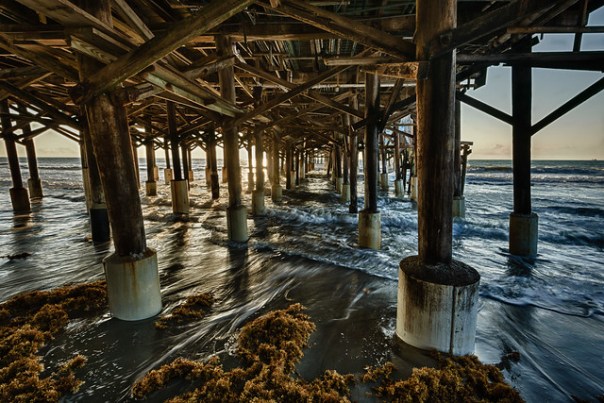Keith H. wanted to try out his 10 stop neutral density filter, so we rode over to Cocoa Beach to make some sunrise photos. It was very clear when we left around 5:30 am, but by the time we parked next to the pier, a few clouds had appeared to make the sunrise more interesting.
A neutral density (ND) filter reduces the amount of light entering your camera. This gives you greater flexibility to adjust aperture and exposure. They’re often used to show motion blur with a slow shutter speed, or reduce the depth of field with a wide aperture. Ideally, ND filters are color neutral – although both Keith and I noticed some color shifts with ours. I was using two stacked 3 stop NDs and this set up worked pretty well to slow the shutter speed and blur the water, especially before sunrise. Keith’s 10 stop was a bit too much before dawn, but would be great after sun rise. Overall, we spent an hour or so working the scene and both came away with photos we like.

A bird flies above a couple making a photograph by a woman walking through the sun.
You can see more photos of Cocoa Beach in this set on Flickr.
Thanks for stopping by and reading my blog. Now – go make some photos!
©2012, Ed Rosack. All rights reserved





